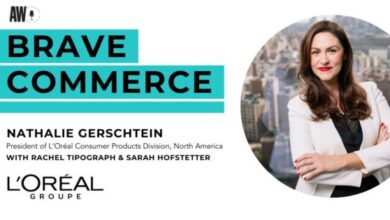
[ad_1]
Using virtual tools and curbing flights can cut emissions in ad production by up to 95%, according to agency AMV BBDO, which uses AdGreen’s carbon calculator.
AdGreen offers free training and tools to help reduce the emissions generated by advertising production.
Anecdotal insights from agencies using the calculator show that ad production can reduce its impact on the climate by opting for more virtual shoots and fewer flights, as long as sustainability is brought into the conversation earlier in the planning stage.
“We’ve been trying to push producers into using the AdGreen calculator preemptively, rather than retrospectively,” said Mark Graeme, executive producer of Red Studios at AMV BBDO. “Otherwise, it’s just an admin tax. You’re documenting, in a detailed fashion, the harm you’ve already caused.”
Still, while curbing emissions from production is progressive, some argue that marketers must focus more on the climate impact of their product—the advertising itself, and its impact on consumption patterns and preferences.
Virtual shoot skeptics
All AMV BBDO producers get free training through AdGreen on climate basics, how to use the carbon calculator, where hotspots exist and how virtual production can help.
With client U.K. retail chain Currys, AMV BBDO has used virtual production on about six shoots. Bringing in virtual backdrops allowed the agency to create fantastical scenes without leaving London.
“That’s a nice journey to go through with creatives because everyone is naturally skeptical [of virtual production] and a bit nervous to start with,” Graeme said. “Once you do it, you [realize] actually this was great, and we enjoyed that. That was easy.”
AMV BBDO also virtually produced a film for healthcare client Bupa’s sustainability strategy, with clips that appear to be shot in the desert, Arctic, rainforest and a city. Cutting travel meant that the carbon footprint of the project was roughly 95% lower than it would’ve been using traditional production, based on calculations using AdGreen’s tool.
Focusing on what makes a difference
“Broadly speaking, what we’ve found so far is that travel and transport is always the highest,” said Jo Fenn, global director of AdGreen. “Spaces is always next, then materials. And then a tiny, tiny, tiny part is disposal. There’s massive emphasis on recycling and not having plastic bottles, and it’s such a small thing. We’ve tried to get people to reshift their priorities and use the limited energy and time that they have in production to focus on the things that really make a difference.”





